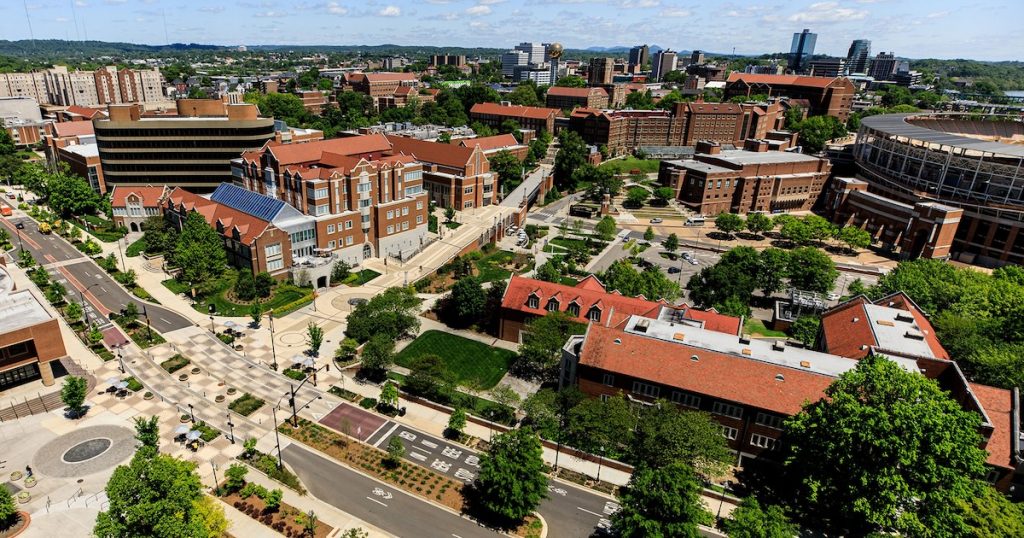Re-Engineering a Chemist
Next spring will not be the first time Hunter Wood walks across the stage to receive his bachelor’s degree.
Wood earned an undergraduate chemistry degree from Rollins College in Orlando, Florida, in 2015, only to discover that the jobs that most interested him also required an engineering background. After a few years traveling the country helping to set up and strike equestrian (horse) competitions, he decided to return to school.
“It’s a lot of fun, but I wasn’t using my mind a lot,” Wood said. “I like working with my hands, building things, and seeing if they work. What appeals to me about engineering is applying the things that you learned.”
Wood is certainly giving his mind a workout now. He is a senior in the Department of Chemical and Biomolecular Engineering (CBE), conducts research in two UT labs, and hopes to pursue a PhD in biomolecular engineering.
Engineering Fertilizer from Thin Air
While Wood has struggled with classwork like exams, lab research comes much more naturally. In fact, his preference for hands-on problem solving inspired his interest in protein engineering.
“I was never good at organic chemistry, so I figured why not have the cells synthesize the things that I would want to build?” he explained. “You can just put these building blocks together, and it all just folds perfectly and has a function. I thought that was just incredible.”
Wood is particularly interested in nitrogen fixation, the chemical process that turns gaseous nitrogen into ammonia, the world’s leading agricultural fertilizer. Currently, most fertilizer is created synthetically via the Haber-Bosch process, which requires high pressures and temperatures, but many microbes naturally perform the conversion.
Wood dreams of helping to build a bioreactor that rivals the efficiency and output of the Haber-Bosch process with fewer energy inputs—supporting not just existing agricultural systems, but space exploration.
“If we were going to get onto other planets, you wouldn’t want to have to ship thousands of pounds of fertilizer in every payload,” he said. “So why not just have, like, a tiny little vial of bacteria that you can grow up and they can fix the nitrogen for you?”
Unlocking low-cost, high-efficiency nitrogen fixation is probably a few decades off. For now, Wood is building his protein engineering skills in the lab of Associate Professor Eric Boder.
Wood’s First Engineered Protein
Boder researches protein engineering, especially how to create mutant proteins with altered or controllable functions. For several years, he has been working to characterize the activity of hemagglutinin (HA), a protein created by the influenza virus that activates in low-pH (acidic) environments, allowing the virus to fuse to host cells and deposit viral genetic material.
Boder hopes that introducing the HA proteins into other contexts will enable cell-specific drug delivery, while new forms of the protein could be triggered by environmental factors other than pH.
“Eventually,” Wood explained, “you could attach HA to a lipid nanoparticle, have it attach to a certain type of cancer cells, then activate it to deliver a certain amount of cancer drug for a certain amount of time.”
This summer, Wood helped Boder identify a good attachment point on HA to attach a tag sequence—a new piece of the protein that can be made to glow when HA is activated. He then added the tag to HA and spliced the new gene into cells that now express the modified protein. Soon, the team will be able to run experiments, using the tags to quickly determine how much of the HA in a cell culture is activated under different conditions.
Wood is delighted to be able to learn and practice engineering skills while contributing to ongoing research—so much so that he is also involved in materials science research with Professor Dayakar Penumadu in the Department of Civil and Environmental Engineering.
He encourages all engineers to take the opportunity of conducting undergraduate research if they can.
“UT has these incredible facilities with these incredible instruments, and they let you use them for free,” he said. “Where else can you use an XPS (X-ray photoelectron spectroscope)? This is an opportunity that I don’t want to pass up. That’s my philosophy on it.”
Contact
Izzie Gall (865-974-7203, egall4@utk.edu)
